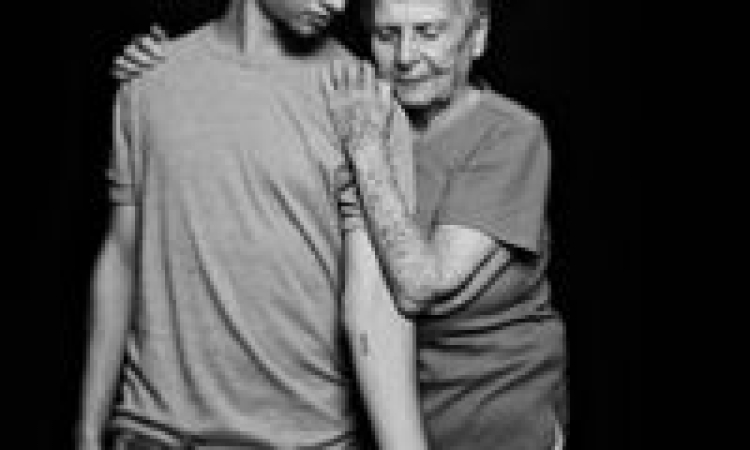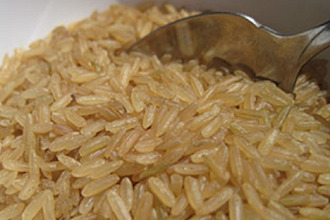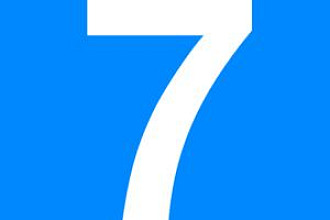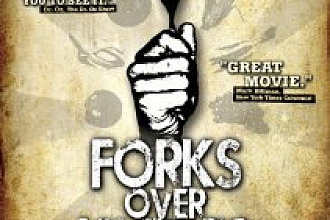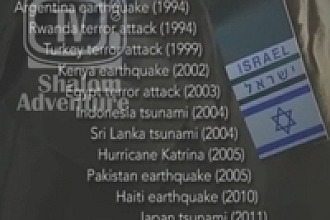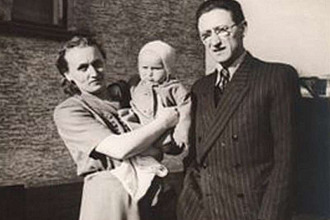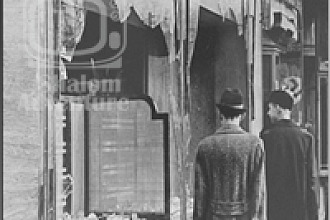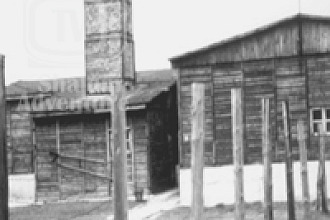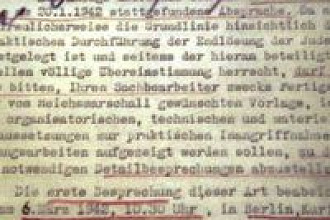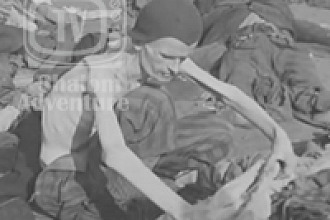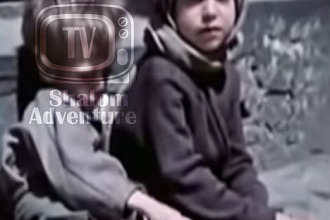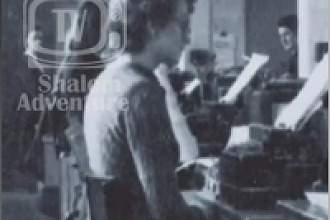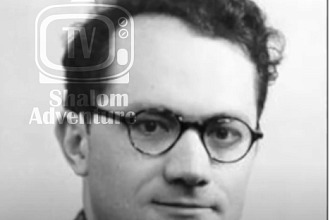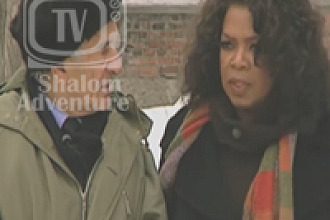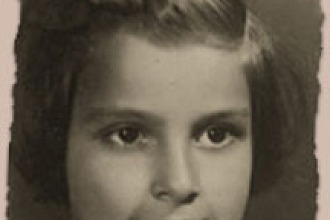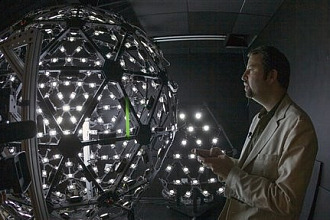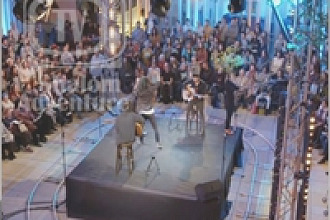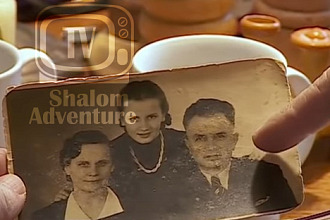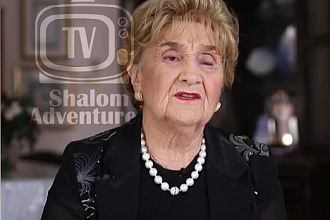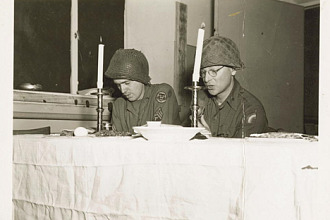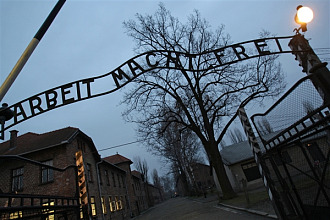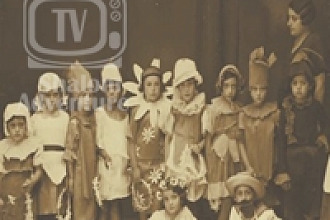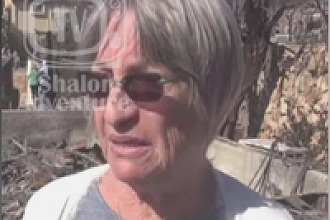Livia Ravek was branded with the number 4559. Now her grandson, Daniel Philosoph, has the same tattoo. At right, three men who stood in the same line in Auschwitz have nearly consecutive numbers.
JERUSALEM — When Eli Sagir showed her grandfather, Yosef Diamant, the new tattoo on her left forearm, he bent his head to kiss it.
Mr. Diamant had the same tattoo, the number 157622, permanently inked on his own arm by the Nazis at Auschwitz. Nearly 70 years later, Ms. Sagir got hers at a hip tattoo parlor downtown after a high school trip to Poland. The next week, her mother and brother also had the six digits inscribed onto their forearms. This month, her uncle followed suit.
“All my generation knows nothing about the Holocaust,” said Ms. Sagir, 21, who has had the tattoo for four years. “You talk with people and they think it’s like the Exodus from Egypt, ancient history. I decided to do it to remind my generation: I want to tell them my grandfather’s story and the Holocaust story.”
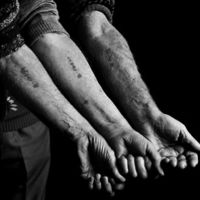 Mr. Diamant’s descendants are among a handful of children and grandchildren of Auschwitz survivors here who have taken the step of memorializing the darkest days of history on their own bodies. With the number of survivors here dropping to about 200,000 from 400,000 a decade ago, institutions and individuals are grappling with how best to remember the Holocaust — so integral to Israel’s founding and identity — after those who lived it are gone.
Mr. Diamant’s descendants are among a handful of children and grandchildren of Auschwitz survivors here who have taken the step of memorializing the darkest days of history on their own bodies. With the number of survivors here dropping to about 200,000 from 400,000 a decade ago, institutions and individuals are grappling with how best to remember the Holocaust — so integral to Israel’s founding and identity — after those who lived it are gone.
Rite-of-passage trips to the death camps, like the one Ms. Sagir took, are now standard for high school students. The Holocaust memorial Yad Vashem in Jerusalem and other museums are trying to make exhibits more accessible, using individual stories and special effects. Arguments rage about whether that approach trivializes symbols long held as sacred and whether the primary message should be about the importance of a self-reliant Jewish state in preventing a future genocide or a more universal one about racism and tolerance.
“We are moving from lived memory to historical memory,” noted Michael Berenbaum, a professor at the American Jewish University in Los Angeles who is among the foremost scholars of the memorialization of the Holocaust. “We’re at that transition, and this is sort of a brazen, in-your-face way of bridging it.”
Mr. Berenbaum said that “replicating an act that destroyed their name and made them into a number would not be my first or second or third choice,” but, he added, “it sure beats some of the other tattoos that some of the young people are drawing on their skin.”
It is certainly an intensely personal decision that often provokes ugly interactions with strangers offended by the reappropriation of perhaps the most profound symbol of the Holocaust’s dehumanization of its victims. The fact that tattooing is prohibited by Jewish law — some survivors long feared, incorrectly, that their numbers would bar them from being buried in Jewish cemeteries — makes the phenomenon more unsettling to some, which may be part of the point.
“It’s shocking when you see the number on a very young girl’s hand,” Ms. Sagir said. “It’s very shocking. You have to ask, Why?”
Tattooing was introduced at Auschwitz in the autumn of 1941, according to the United States Holocaust Memorial Museum’s Encyclopedia of the Holocaust, and at the adjacent Birkenau the next March. They were the only camps to employ the practice, and it is unclear how many people were branded, briefly on the chest and more commonly on the left forearm.
Only those deemed fit for work were tattooed, so despite the degradation, the numbers were in some cases worn with pride, particularly lower ones, which indicated having survived several brutal winters in the camp. “Everyone will treat with respect the numbers from 30,000 to 80,000,” Primo Levi wrote in his seminal memoir, “Survival in Auschwitz,” describing the tattoos as part of “the demolition of a man.”
After the war, some Auschwitz survivors rushed to remove the tattoos through surgery or hid them under long sleeves. But over the decades, others played their numbers in the lottery or used them as passwords.
Dana Doron, a 31-year-old doctor and daughter of a survivor, interviewed about 50 tattooed survivors for the new Israeli documentary “Numbered,” which she directed with Uriel Sinai, a photojournalist; it will make its premiere in the United States next month at the Chicago International Film Festival.
Correction: October 4, 2012
An article on Monday about the children and grandchildren of Auschwitz survivors who are tattooing their bodies with the same number that was branded on their relatives at the Holocaust death camp contained several errors.
The tattooed number that Ayal Gelles, 28, shares with his 86-year-old grandfather, Avraham Nachshon, is A-15510, not A-15520.
An Ottawa glass artist and his mother, who have matching tattoos of her number, are Oded and Livia Ravek — not Rebak. Mr. Ravek’s son, who is tattooed with the same number, is Daniel Philosoph, not Philosof. The misspelled surnames were repeated in a picture caption.
And Michael Berenbaum, a professor at the American Jewish University in Los Angeles and a leading scholar of the memorialization of the Holocaust is not the son of Holocaust survivors. His grandparents immigrated to the United States from Poland, Russia and Austria decades before the German occupation.
This article has been revised to reflect the following correction:
Correction: October 8, 2012
A correction in this space on Thursday for a front-page article last Monday about the children and grandchildren of Auschwitz survivors who are tattooing their bodies with the same number that was branded on their relatives at the Holocaust death camp misspelled the surname of a survivor who now shares the number with his grandson.
Originally from here
Posted on Shalom Adventure by: Jeff Zaremsky

